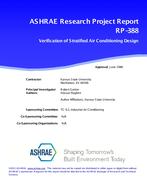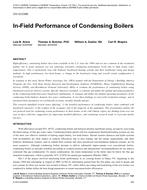The performance of ground-source heat pumps (GSHP) can be seriously affected by the thermo-mechanical interac-tion between the collector pipes or coils and the surrounding ground. The design and installation of collector pipes or coils should aim for efficient heat exchange with the surrounding ground and free circulation of circulating liquid. In the case of vertical collector pipes, there is a possibility of pipe squeeze or collapse by the radial expansion of ground due to freezing during heat extraction, thus affecting the GSHP performance. This paper describes a case study in which some of the 129 GSHP installations in a new development in Richmond Hill, Toronto, experienced severe performance problems by the pipe squeeze due to ground freezing and ice lensing. A detailed geotechnical evaluation of the subsurface conditions showed that the backfilling practices used at this site produced frost susceptible soils in the collector holes, which, under subzero °C operating temperatures, expanded and led to pipe squeeze. The results of laboratory scale model experiments simulating the interaction between collector pipes and ground are also presented to support the hypothesis of pipe squeeze by ground freezing and conditions necessary for its manifestation. In this case, tremie grouting the annular space between the collector pipes and the drill hole with a cement or cementbased grout that has very little free water to expand upon freezing was found to prevent such problems. Thermally enhanced cement-based grouts can also improve the heat exchange efficiency of the collector pipes. The selection of backfill material needs to be carefully considered in GSHP installations with long heating seasons.
Units: Dual
Citation: Symposium, ASHRAE Transactions, vol. 106, pt. 1
Product Details
- Published:
- 2000
- Number of Pages:
- 11
- File Size:
- 1 file , 210 KB
- Product Code(s):
- D-7339


